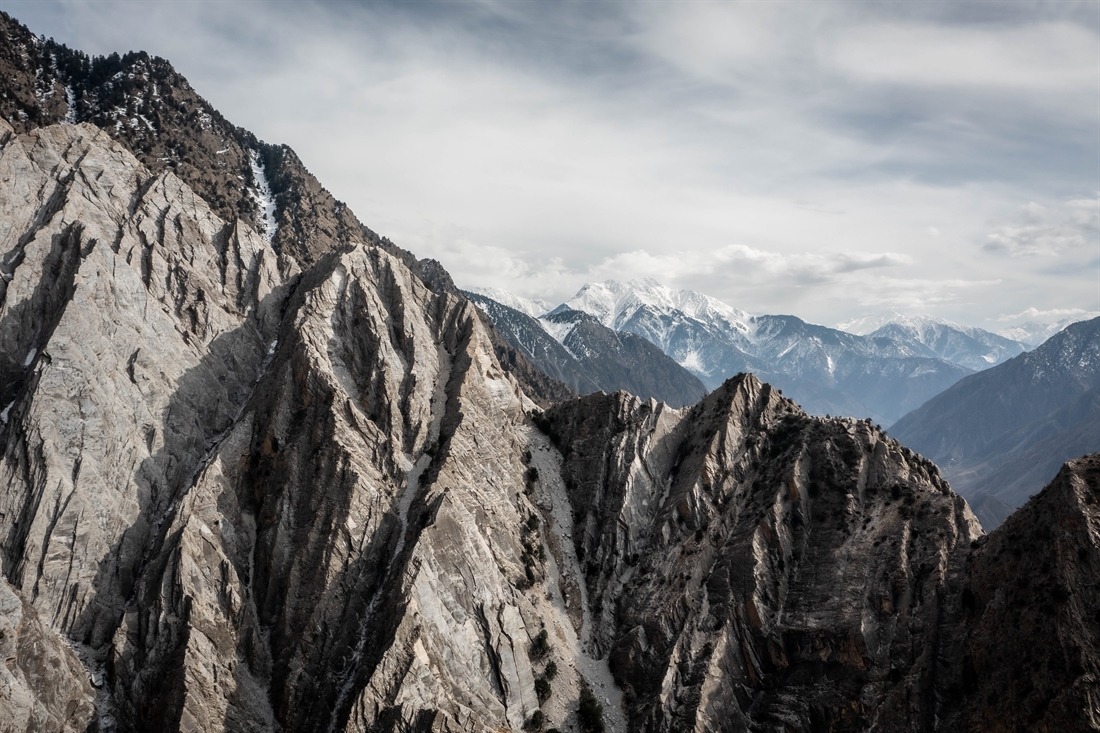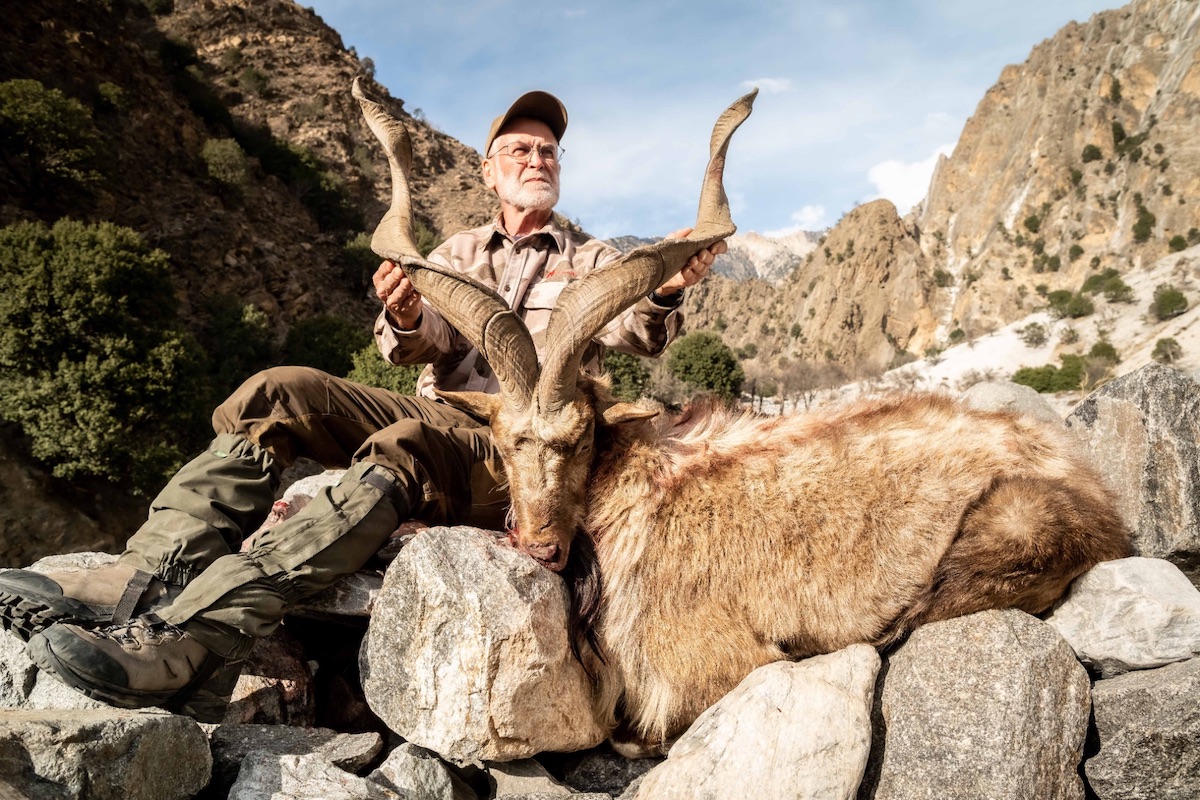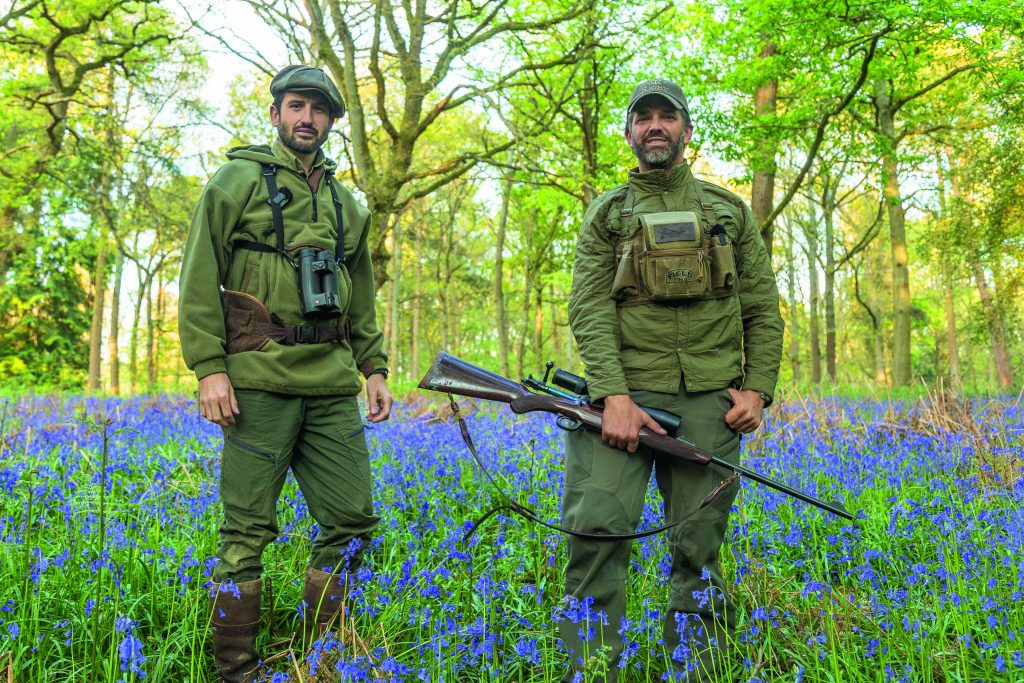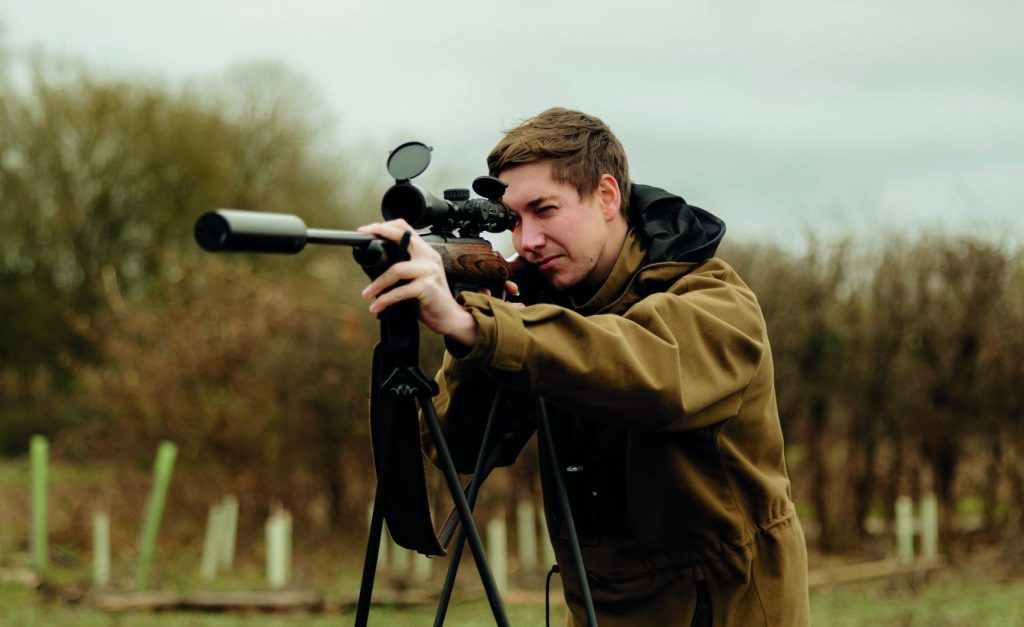High stakes
The inclusion of licensed hunting in a conservation plan is a brave move – but the success of Pakistan’s markhor strategy shows that while the risks are many, the rewards can be immense. Simon K. Barr flies to the Hindu Kush to join indomitable septuagenarian Steve Hornady, whose day job is overseeing Hornady Manufacturing in Nebraska, USA

The mountains around us echoed with the sounds of partridge, or chukar as they call them here, and inside our hearts we willed them to relax and not disturb the remarkable flare-horned markhor. It was day one of our trip in the Hindu Kush, the foothills of the Himalayas. We had seen a herd through the spotting scope, breaching a ridge. It was sunrise, and the beguiling horns, long beards and draping capes of these unusual-looking creatures were silhouetted on the skyline, in all their rarified glory.
Fortune was favouring us, gifting us a unique spectacle, an incredible introduction to this celestial creature, the national animal of Pakistan.
As yet, these manoeuvres were fruitless, which came as little surprise to these experienced guides, who had already warned us that the markhor are an alert, agile species, with excellent eyesight. It’s difficult to get within shooting range without being detected, and the team of watchers typically spend several days in the mountains prior to a hunt, scouting the area in search of the right animal, tracking with binoculars, to see where the herds and older males are.
The undisputed king of the Capra genus proved elusive until day five. Each day, we would see a group traversing some far away slope, out of range, and would embark on some gnarly climbs to get into a solid shooting position. But our moves weren’t working, the weather was only getting warmer, and the opportunity was slipping away.
The long days were physically exhausting, for both myself and Steve, who impressively was in his 74th year. The steep slopes and rocky outcrops of the Hindu Kush terrain are treacherous, and hunters must be physically capable of withstanding both those and the harsh conditions of the unpredictable, often below freezing, temperatures.
I wasn’t sure what impressed me more: Steve’s sheer resilience or the markhor’s resourcefulness. I then watched one of these mountain goats through a spotting scope with its head down, looking for greenery to eat, jump into a tree like a cat and start to eat the leaves of the higher limbs. I had my answer.
A FIGHTING CHANCE
The many moments of glassing, binos in hand, provided plenty of opportunity to reflect on the importance of what has been achieved here in northern Pakistan. In recent decades, there has been significant concern about the markhor, with worryingly low populations putting the species on the International Union for Conservation of Nature’s (IUCN) ‘critically endangered’ list. All three subspecies of markhor in Pakistan faced threats from habitat loss, poaching, and pressure from illegal hunting. The local goat farmers also saw them as a pest that competed with livestock for limited food sources. As a result, they were treated as a pest and killed indiscriminately.

Almost immediately the locals stopped viewing the markhor as a pest and started viewing them as a valuable resource. They stopped culling them and started protecting the diminished herds. They took pride in learning about them and their habits. They became custodians who protected them and showed a small number of overseas hunters how to spot and stalk them in their natural habitat.
As a direct result of this strictly limited trophy hunting programme, markhor numbers in Pakistan have increased from about 2,000 to over 4,500. It has been so successful that markhor were removed from the ‘critically endangered’ list in 2015, and are now rated ‘near threatened’.
Special Assistant to the Prime Minister on Climate Change, Malik Amin Aslam, says his office supported regulated hunting as a positive step for conservation. “Animals that have reached the end of their lives are put out for trophy hunting. While the government keeps 20% of the money generated from the licence auctions, the remaining proceeds go to the development of local communities, which in return become custodians of the habitat and their animals and protect them from poaching,” he says. “Trophy hunting has proved successful in Gilgit-Baltistan where markhor, ibex and the Marco Polo sheep were almost extinct but are now thriving. It was all linked with trophy hunting.”
While many outside of the hunting community would be outraged by the idea of endangered animals being killed for conservation, the fact is that in Pakistan trophy hunting is a success story. When done with careful thought and scientific nous, hunting is a credible tool in wildlife conservation, and supports endangered species, particularly when all parties, including government, local agencies and local communities, are involved.
DAY FIVE
There was excitement from one of the watchers. He had seen a group of markhor and in its ranks was a mature male, a good candidate for our licensed hunt. The group was still 1,300 yards away, so we sat patiently; it was now a waiting game – will they get close enough for a shot?
We watched the calm animals through the binoculars for five hours as they moved from their initial position. The closer they got, the more Steve had to hold his nerve, but at last, he could see the chance for a safe but still challenging shot. Steve’s shot proved his many years of mountain hunting experience. Finally at 480 yards using old- school holdover, aided by a ballistic solution from Leica’s Geovid Pro 32, he fired a long, acute angled 178 grain projectile, which impressed everyone that witnessed it. Including him. I think he is one of the only people I know that shoots ammunition with his name on the bottom of every cartridge.

It was awe-inspiring to see this majestic animal up close, having spent the week glassing them from over a thousand yards away. We marveled at its long, spiraled horns, which at up to 1.5m in length are seen as a symbol of strength and power in this region that all-too-often experiences such grave volatility and instability. Playing a crucial role in the animal’s survival, they are used for territorial battles and as a means of defense against predators, such as the snow leopard and Himalayan wolf.
It is clear why there is a market for hunters to bag such an incredible trophy. But this label does very little to explain why people like Steve travel across the world for this experience. It says nothing about the adventure, or the gruelling challenge of the hunt. It says nothing about the partnership with the local communities, which has resulted in a new bridge over the Indus river, an 8km pipeline that has brought fresh water to the villages, and the renovation of a local school. And it says nothing about the beauty of the region, the local culture, and the sustainable hunting practices that have been proven to be vital in preserving the species for future generations.
Trophy hunting has saved the markhor from extinction, and as someone who cares deeply about what his Hornady products are used for, this gives Steve immense satisfaction. But there is no happy ending here. In recent months, populations that were seeing such incredible growth in Pakistan have started to fall, in part due to increased poaching, and in part due to border fencing which has restricted movement. The work of the watchers and custodians has never been so crucial, but judging by the grit and determination I witnessed, we can be confident that while the work of conservation is never over, the future of the markhor is in good hands. 
KIT BOX
Outfitter – Caprinae Safaris
Leica Sport Optics – Geovid Pro 32 binoculars – APO Televid Spotting scope
Hornady – 178gr ELD-X 300 RCM
Related Articles
Get the latest news delivered direct to your door
Subscribe to Fieldsports Journal
Elevate your experience in the field with a subscription to Fieldsports Journal, the premium publication for passionate country sports enthusiasts. This bi-monthly journal delivers unparalleled coverage of game shooting, fishing and big game across the UK and beyond.
Each issue offers a stunning collection of in-depth features, expert opinions and world-class photography, all presented in a timeless yet contemporary design.
Save 10% on shop price when you subscribe, with a choice of packages that work for you. Choose from Print & Digital or Digital only with each journal delivered directly to your door or via the app every other month, plus access to past issues with the digital back issue library.







